Syn.: Brassia aristata Lindl., Brassia brachiata Lindl., Brassia coryandra E. Morren, Brassia cowanii Lindl., Brassia longiloba DC., Brassia odontoglossoides Klotzsch et H. Karst., Oncidium brachiatum (Lindl.) Rchb. f., Oncidium verrucosum (Bateman ex Lindl.) Rchb. f.
Family: Orchidaceae Juss.
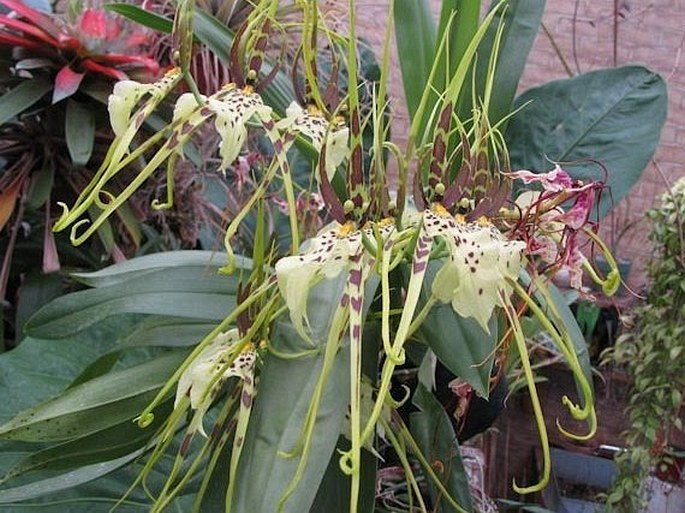
Distribution: Central America, from southern Mexico to Costa Rica and in South America in Venezuela, Brazil and Peru. South American plants might be Brassia bidens.
Ecology: Grows as epiphyte in tropical rain to cloud forests in elevations from 900 m to 2400 m. Blooms in late spring.
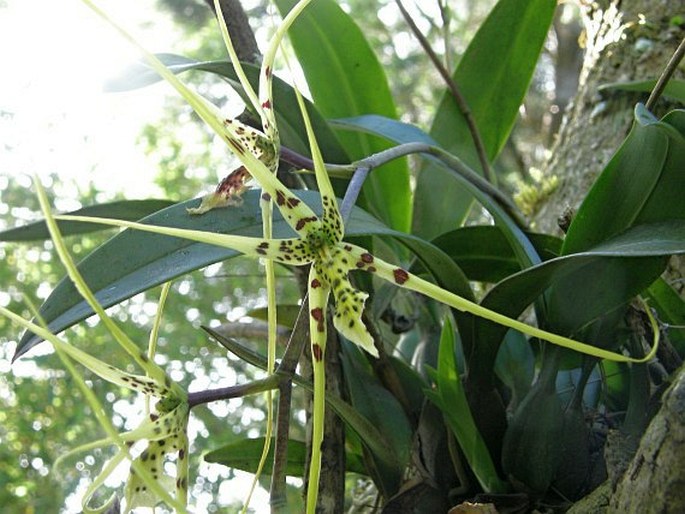
Description: Perennial herb with narrow ovoid pseudobulbs. Leaves strap-like to lanceolate, usually 2 adult leaves present, up to 45 cm long, 2.5 cm wide. Inflorescence is an open raceme, 6–12 flowered dichotomously, flowers up to 20 cm large, pale green to yellowish, fine brownish spotting at base of tepals. Dorsal sepal and petals quite similar, petals more solid brown than spotted, lateral sepals longer, sometimes with hooked tips; lip 5 cm long, heart-shaped with elongated tip, white with brownish spots, slightly raised at base (as warts – verrucosa), wavy edges; column about 4 mm long. Fruit is a capsule.
Threat and protection: This species as the whole family Orchidaceae are listed in Schedule II of CITES agreement in trade of endangered species.
Note: Nowadays the orchids are hybridized to such a degree that it is very difficult to find original botanical species on market. Therefore, there is no guarantee when you buy a plant with a certain label, that you have what you wanted. Some Brassias are very similar to each other and pose the same danger of misidentification.
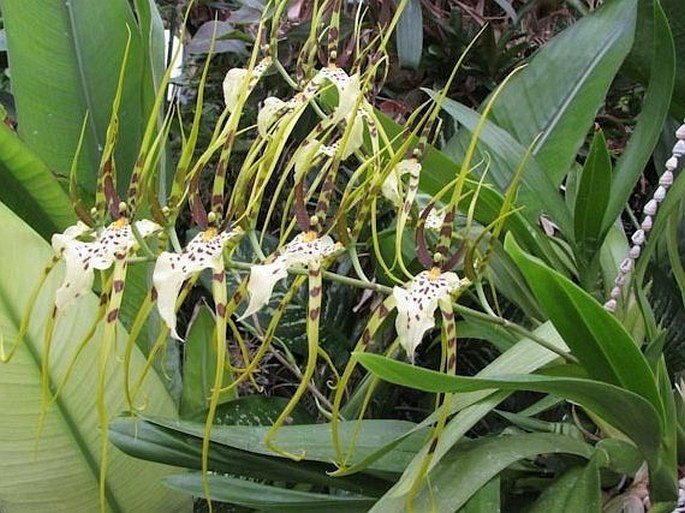
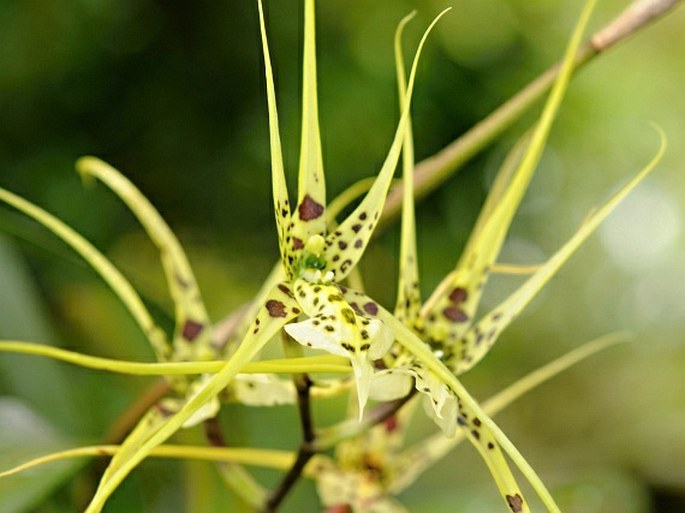
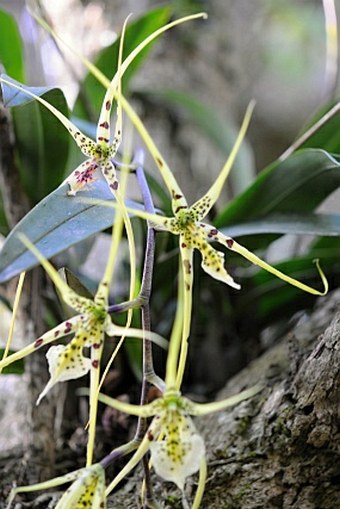
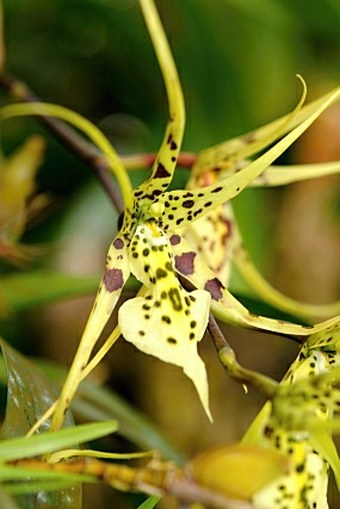
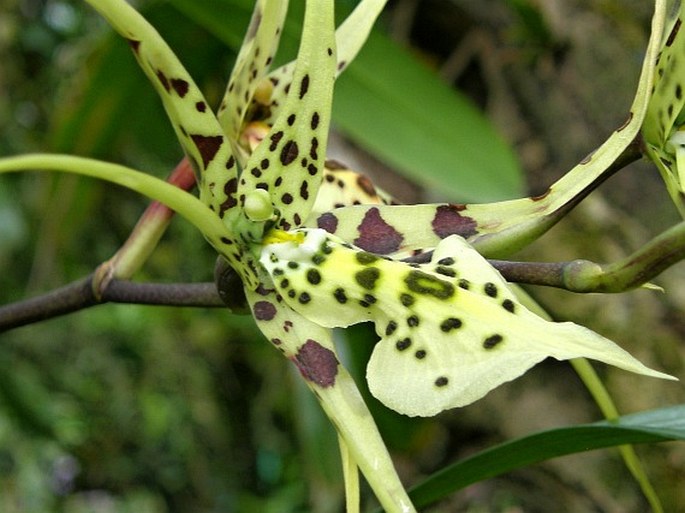
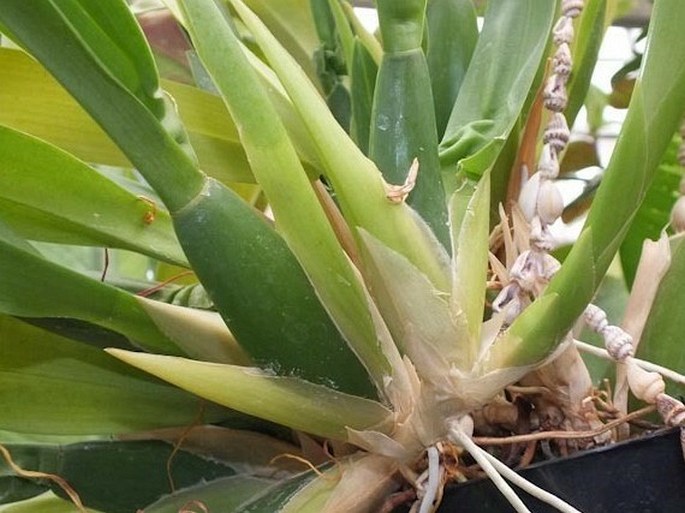
These images were taken in culture – in Canadian greenhouse (by Karel Bergmann) and Costa Rica, Monteverde (by Alena Vydrová and Vít Grulich, 21. 2. 2009).


